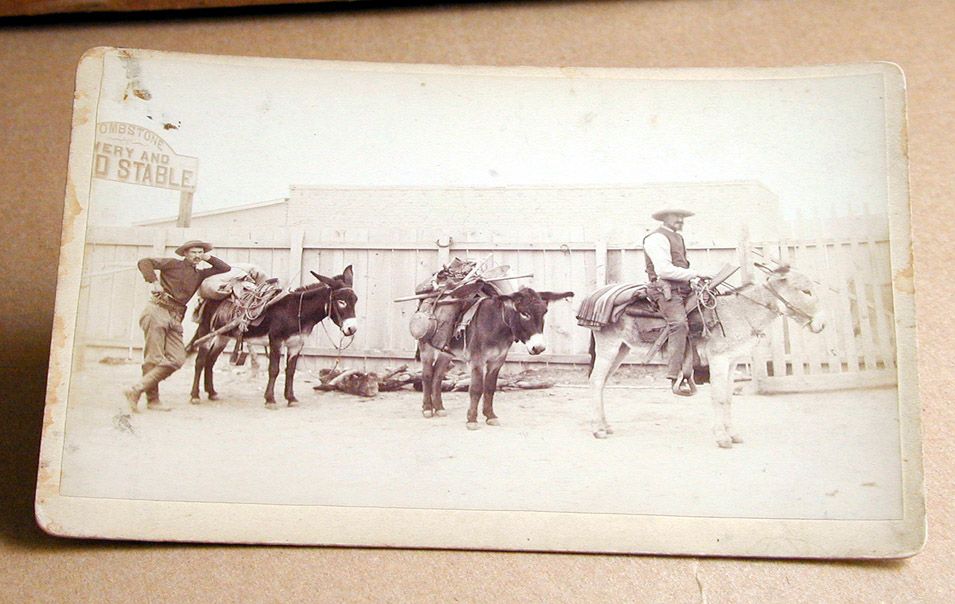Camillus Fly the Silver Prospector and Photographer of Tombstone, Arizona 1885
The photograph shown here is an original photograph taken and printed by Camillus Fly from his glass plate negative in his studio in Tombstone, Arizona. It dates to about 1880 - 1885. In addition to being a photographer, Fly was also a silver prospector in the Tombstone area. I found this photo in an antique shop several years ago.
Wikipedia the Free Encyclopedia: Camillus "Buck" Sydney Fly (May 2, 1849 – October 12, 1901) was an Old West photographer who is regarded by some as an early photojournalist and who captured the only known images of Native Americans while still at war with the United States. He took many other pictures of life in the silver mining boom town of Tombstone, Arizona and the surrounding region. He recognized the value of his photographs to illustrate periodicals of the day and took his camera to the scenes of important events where he deliberately recorded them and resold pictures to editors nationwide.
He was an eyewitness on October 26, 1881 to the Gunfight at the O.K. Corral, which took place outside his photography studio. He took pictures of a number of Tombstone residents including Tombstone founder Ed Schieffelin, pioneer surgeon Dr. George E. Goodfellow, Wyatt Earp's wife Josephine, and others.
On October 26, 1881, the Gunfight at the O.K. Corral occurred in an alley adjacent to his boarding house. During the shootout, Cochise County Sheriff John Behan took cover inside the boarding house,[citation needed] watching the gunplay, only to be joined by Ike Clanton who ran away from the gunfight, telling Wyatt Earp that he was unarmed. Fly, armed with a Henry rifle, disarmed Billy Clanton as he lay dying against the house next door.
In March, 1886, Department of Arizona General George Crook received word that the Apache leader Geronimo would meet him in Cañon de los Embudos, in the Sierra Madre Mountains about 86 miles ) from Fort Bowie. Fly learned of the meeting and on March 20, 1886, took his equipment and attached himself to the military column. During the three days of negotiations, Fly took about 15 exposures on 8 by 10 inches (200 by 250 mm) glass negatives.
A picture of Geronimo with two of his sons standing alongside was made at Geronimo's request. Fly's images are the only existing photographs of Geronimo’s surrender. He coolly posed his subjects, asking them to move and turn their heads and faces, to improve his composition.
Fly served as Cochise County Sheriff from 1895 to 1897. Most of his negatives were destroyed by two fires that burned his studio to the ground. His widow, photographer Mary E. "Mollie" Fly, donated his remaining images to the Smithsonian Museum before she died in 1912. His photographs are legendary and highly prized.
Your votes are always appreciated. If Steemit is to grow and prosper, we need to generate interest in topics other than cryptocurrencies.

On the backside:

For more info on Camillus Fly: https://en.wikipedia.org/wiki/C._S._Fly